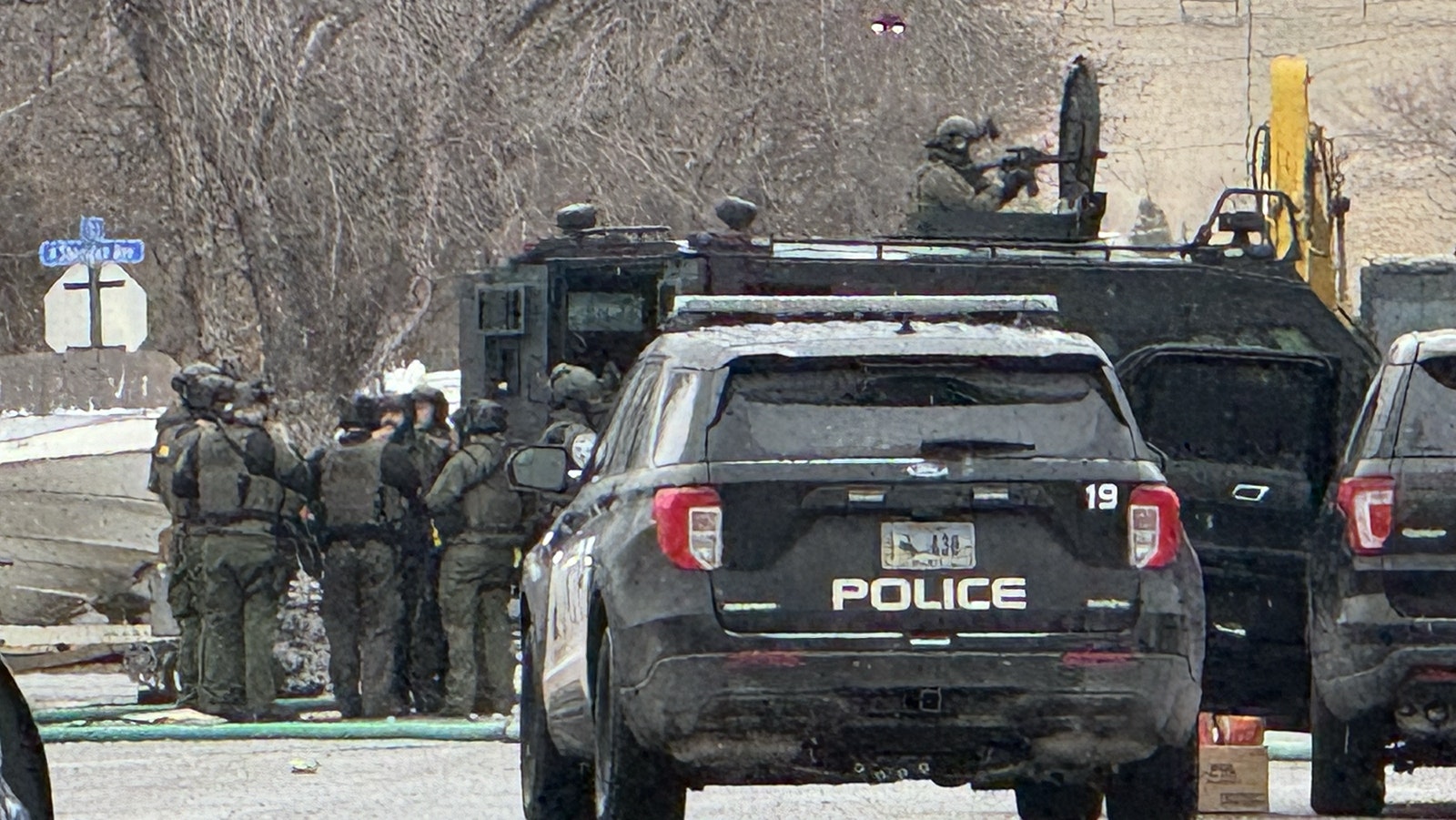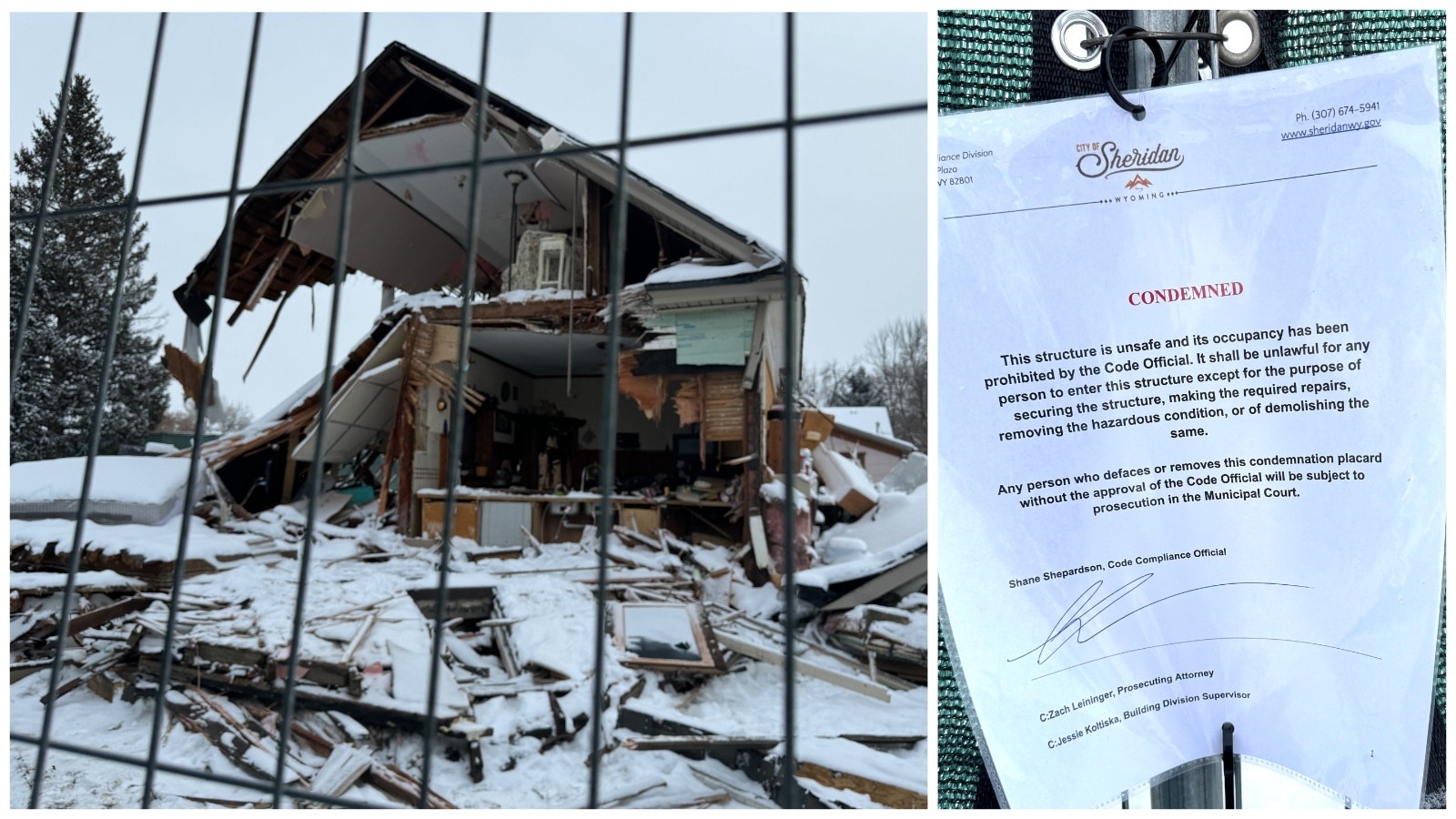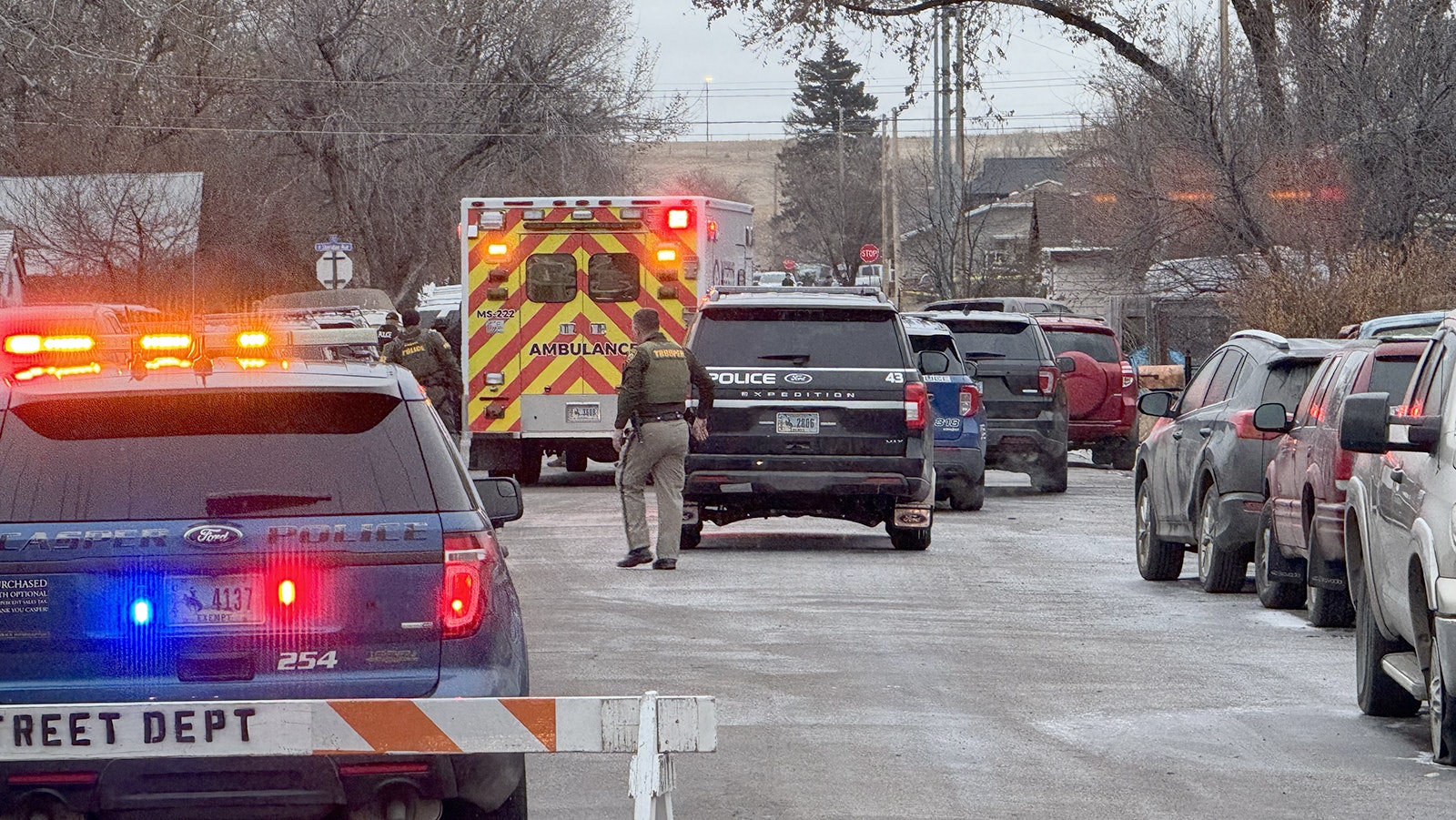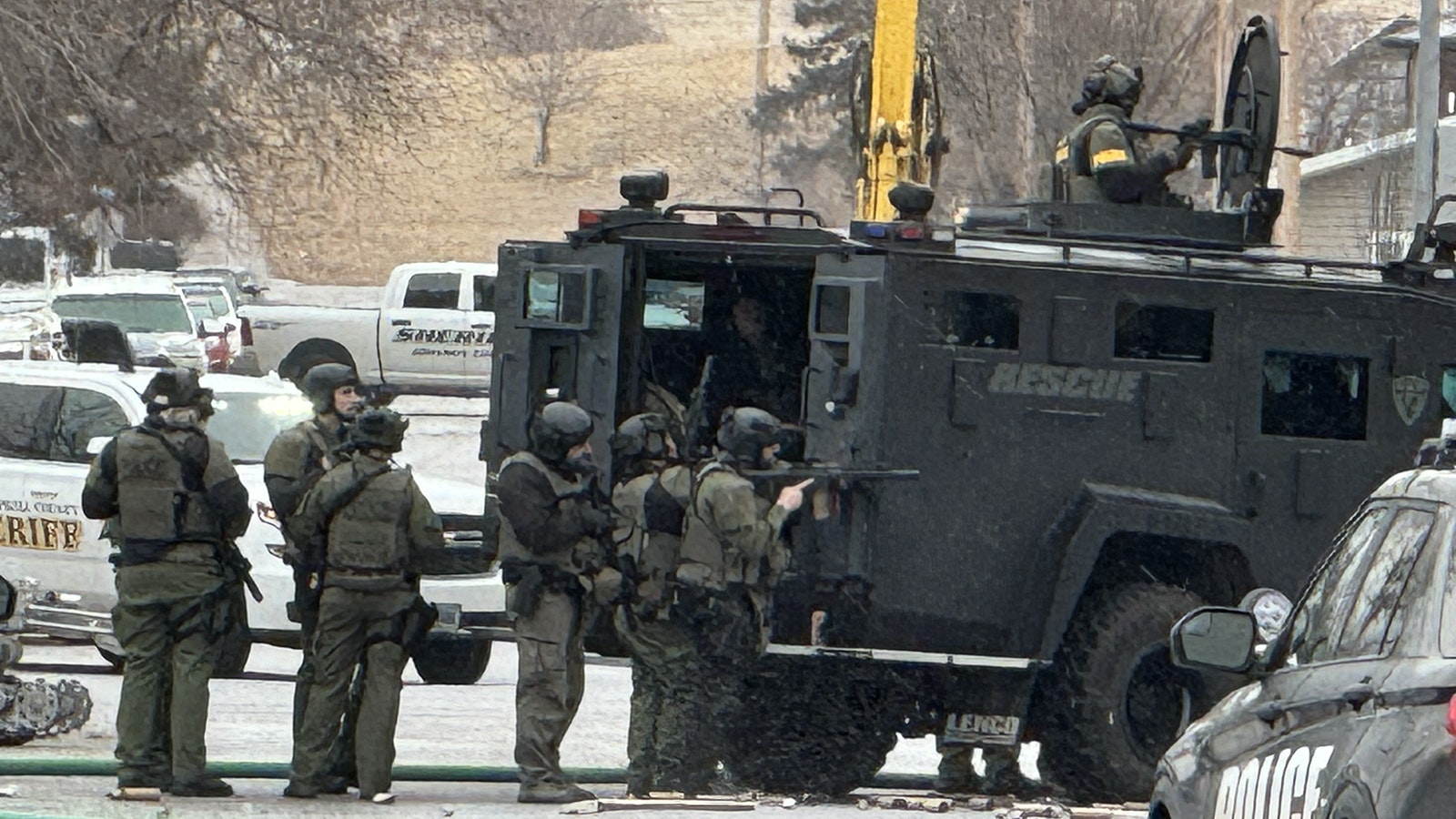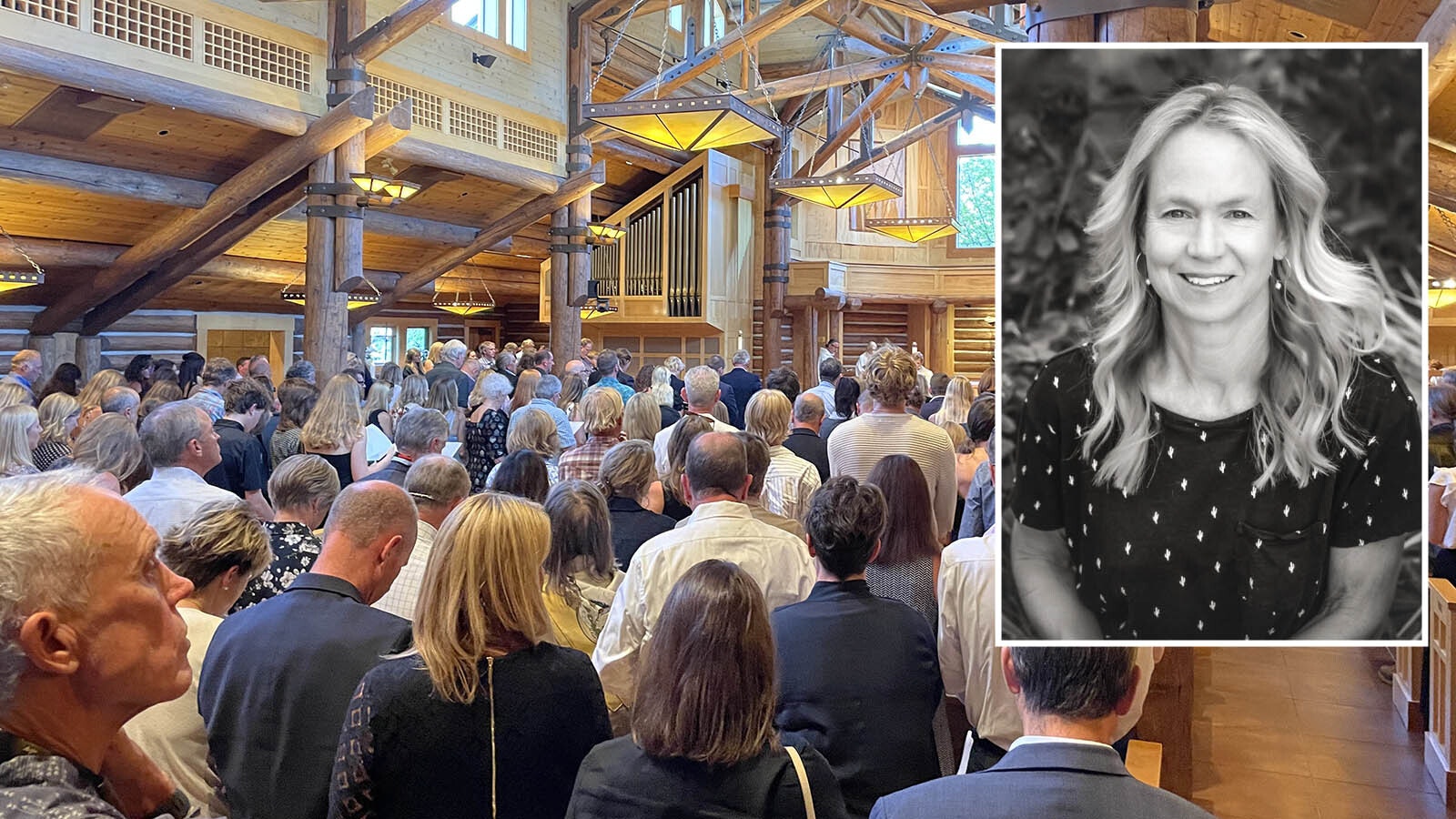The family of the man who shot a Sheridan Police Department sergeant last year is suing law enforcement, saying that police should not have destroyed a home and fatally shot the man after the incident.
The lawsuit accuses Chand, Sheridan Police Chief Travis Koltiska, and other unknown “John Does” of wrongfully causing the Feb. 14, 2024, death of William Lowery, 46, who had shot Sheridan Police Sgt. Nevada Krinkee one day prior.
Lowery’s sister Genevieve Lowery filed the complaint Monday in the U.S. District Court for Wyoming, against Koltiska and Chand in their individual and official capacities, via her attorney Douglas Bailey, of Cheyenne-based Bailey, Stock, Harmon, Cottam, Lopez LLP.
Lowery shot Krinkee five times, killing him, on Feb. 13, 2024, while Krinkee went to remove Lowery from a home from which he’d been evicted via court order, according to case documents.
Lowery ran, armed, to a nearby home and took refuge in it. A dramatic standoff followed during which Lowery shot toward police officers and shot at least one drone and one police vehicle, while officers urged him to leave the home.
Police flooded the home with water and tore it open with excavation equipment.
When Lowery fled the home Feb. 14, 2024, he carried an AR-15 rifle and wore a smile, then-Casper Police Department Officer Michael Chand told Cowboy State Daily in a Tuesday phone interview.
Chand was one of many officers from outside agencies who came to help with the intense standoff. He’d been out in the snow for more than 24 hours, except for brief stints when the cold drove him into a nearby home, he said.
At the time, seeing Lowery exit able-bodied and armed, potentially headed toward other homes or people and after shooting at police for hours, Chand believed he needed to shoot him to protect others, he said.
Perched on top of an RV under persistent snowfall, Chand spotted Lowery from about 50 yards away through his scope and saw him smile and walk quickly with the gun.
Chand fired one shot.
He still believes that was his only option.
The Wyoming Division of Criminal Investigation (DCI) investigated the two-day event and both fatalities.
After reviewing that investigation, Sheridan County Attorney Dianna Bennett wrote a June 28 letter to DCI Special Agent Dan Allison, saying Chand’s actions were justified under the law, and she would not prosecute him in Lowery’s death.
Bennett released the letter to Cowboy State Daily on Oct. 1.
DCI had declined for more than a year to release investigation documents because the criminal case in which Lowery’s mother, Eileen Hurley, was charged with giving Lowery guns despite his felon status was still ongoing.
Hurley was sentenced Oct. 1 to one year and one day in prison.
That case’s conclusion made the Lowery case documents releasable for the first time.
Justified
Bennett, who is Sheridan County’s top prosecutor, wrote of Chand’s actions in her letter.
“Once Lowery exited the residence, he was clearly armed with a rifle and he was headed in the direction of other law enforcement and first responders who were in close vicinity,” she wrote, adding that the homes in that neighborhood are closely spaced, and Lowery could have ducked into one and sparked a new standoff or endangered others. “Officer Chand’s action was justified and no charges will be filed regarding this tragic event.”
Chand’s most vivid recollection of those two days is of the sense of heartache that stretched through Sheridan.
“From my experience the most devastating part of that entire event was just the overwhelming amount of hurt that that incident caused that city,” he said. “The officers, the nurses working; the residents within the city. Just the senseless act of violence.”
Krinkee was beloved, his friends and colleagues said at his funeral, which Gov. Mark Gordon and other dignitaries also attended.
The Lawsuit
Genevieve Lowery’s lawsuit complaint alleges that Krinkee and others in Sheridan knew Lowery and that he had mental health and addiction issues.
In a standoff, the emphasis should be on stabilizing the situation, gathering intelligence, crisis negotiation and then tactical options and use of force, says the complaint.
The complaint says Krinkee “is believed to have tackled Mr. Lowery and hit him in the head with his police baton,” and theorizes that Lowery could have shot Krinkee in self-defense.
Bennett’s letter, referencing body camera video, tells a different story.
Lowery fled during a confrontation with Krinkee; Krinkee pursued him and told him to stop and comply, wrote the prosecutor.
“Sgt. Krinkee was calm and professional throughout the contact,” Bennett wrote. Krinkee requested backup. A “physical altercation followed,” and Lowery pulled a gun from his waistband area and shot Krinkee.
“Later we learned he shot… Krinkee five times,” wrote Bennett, who called those last four firings execution-style shots. “The video, although very difficult to watch, (left me) impressed at the professionalism and patience displayed by Sgt. Krinkee throughout the contact until the time he was shot.”
Bennett said there’s no indication Lowery acted in self-defense.
“Not long after leaving the scene, Lowery texted his ex-landlord and asked him if he was happy with what happened,” wrote the prosecutor.
Evidence
Genevieve Lowery’s lawsuit complaint counters, saying neither the Sheridan Police Department nor DCI gave her body camera video or other reports despite repeated requests.
DCI only releases records it produces and leaves other releases up to the agencies that created the material requested, DCI Commander Ryan Cox told Cowboy State Daily in a Tuesday interview.
Koltiska said no request for the evidence crossed his desk between Hurley’s sentencing – when evidence became releasable – and the lawsuit’s filing.
Beyond that, Koltiska declined to comment, citing the active nature of the litigation.
At The Time
When law enforcement converged on the home where Lowery self-barricaded, they didn’t know whether Lowery had acted in self-defense, the complaint says.
Lowery’s mother and sister, both of Nebraska, started driving to Sheridan to reason with Lowery, the lawsuit says – and at least one DCI agent knew of that, and that Lowery had “mental health problems,” says the complaint.
The complaint details the police breaches of the home: lobbing gas grenades, shooting gas projectiles, blasting the home with a firehose and ultimately demolishing it with an armored vehicle and construction equipment.
Law enforcement destroyed the home, which belonged to local woman Karo Hamilton, who told Cowboy State Daily in a prior interview that she did not know Lowery. The city later paid Hamilton a settlement.
To Genevieve Lowery, “(law enforcement) did not need to act as they did. They could have waited, allowing the siege to force Mr. Lowery out,” says her complaint. “They could have waited for Mr. Lowery’s mother and sister to arrive to assist in negotiation. Instead, they chose to escalate to threaten Mr. Lowery’s life and then end his life.”
The officers acted as “’judge, jury and executioner’ of Mr. Lowery, in violation of Mr. Lowery’s Fourth Amendment rights,” says the complaint.
Lowery left behind his mother and sister, and two children, the document adds.
It asks for compensatory and punitive damages, attorneys’ fees, pre- and post-judgment interest, and any other relief the court deems appropriate.
Clarification - an earlier version of this story said Bennett's office received "months of requests" for the decision letter. Cowboy State Daily called Bennett for the decision letter in August 2024, but she referred the outlet to DCI, after which those requests were made to DCI.
Clair McFarland can be reached at clair@cowboystatedaily.com.


